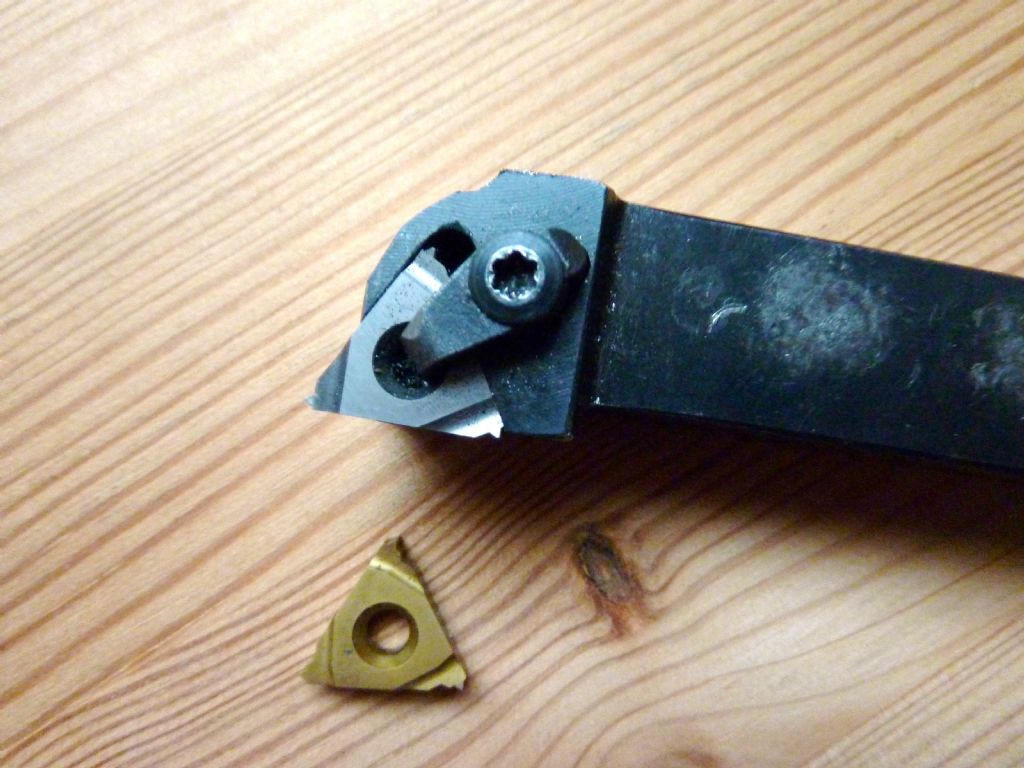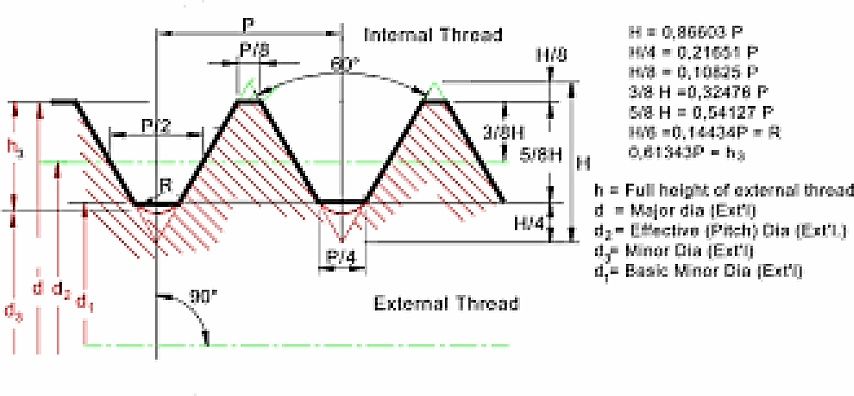By far the easiset way to keep track of thread depths is to use what I was taught as the zero-to-zero method. Most especially if you may need to make corrections for a threading tool that is not to true full form shape. In the home shop tools are almost invariably too sharp on the point so you need to cut a bit deeper. Geo. H Thomas describes the zero-to-zero method in Model Engineers Workshop Manual, although not under that name, attributing it to a star turner and considers it good which is reccommendation enough for me.
The two great advantages are:-
1) the topslide only needs to be set to approximately the thread half angle, my topslide lives at 25° off pretty much premanently to keep the handles out of each others way and this works fine for both 55° and 60° threading.
2) you set things up before you start to finish with both cross and topslide on zero so the lathe does all the infeed calculations for you.
Assuming the job has been turned to the correct diameter method is :-
1) Set topslide over to a bit less than the thread half angle
2) Mount tool perpendicular to job
3) Bring tool tip up to touch the work
4) Set both top and cross slide dials to zero
5) Back off the cross-slide a little so the tip doesn't scratch the job and move saddle to take tool clear of the end of the workpiece
6) Feed the cross-slide forwards past zero by the desired thread depth
7) Set the cross-slide dail back to zero
8) Pull the topslide back far enough to clear the work the feed forward enough to make the first cut at whatever depth seems right to you
9) Make a threading pass
10) Pull back the cross-slide to clear the job and return to the starting point
11) Apply feed for the next cut via the topside, set the cross-slide to zero and make the next threading cut
12) Repeat steps 10 and 11 until both dials are at zero.
If the thread size is wrong adjust the setting on the cross-slide for successive passes until things are correct. Don't touch the top slide when correcting. Generally you will need to go deeper as home ground tools are usually too pointed. Once you have the thread size right re-set the cross-slide to zero and any further threads will come out right. If youa re only doing one thread which needs to be perfect best to do a test piece first and note the correct infeed for your tool.
A threading stop on the cross-slide makes for faster work as you dont have to read the dial when re-setting for the next threading pass.
I like the Johansson / SKF two thread full form chaser system. The 'bite out of a circle" form tools will stand several lifetimes worth of sharpening at my rate of use. Cant beat a coventry die head for small work.
Its not too hard to calculate the extra feed needed for a sharp pointed tool. Easiest way to get approximately the right, albeit flat, tip width is to make the tool sharp, measure its length and trim the end back enough to truncate the tip to give a suitable flat. Measure how much shorter you have made the tool then reduce the calculated sharp point infeed by the same amount. This is a bit wasteful on tool steel because you have to go back to sharp each time then trim back. Helps if you have a holder for short bits and have two or three tools on the go with different tip widths.
Clive.
Edited By Clive Foster on 18/03/2016 21:52:02
Edited By Clive Foster on 18/03/2016 21:53:25
Mike Rolly.






